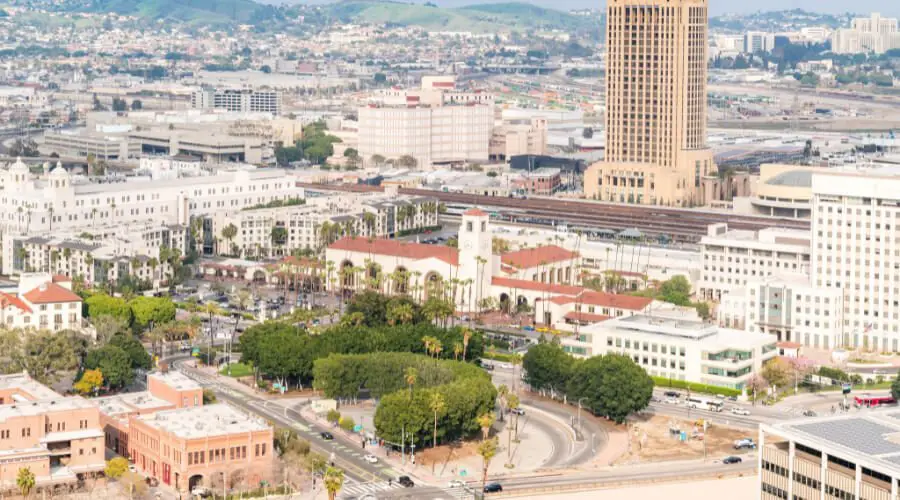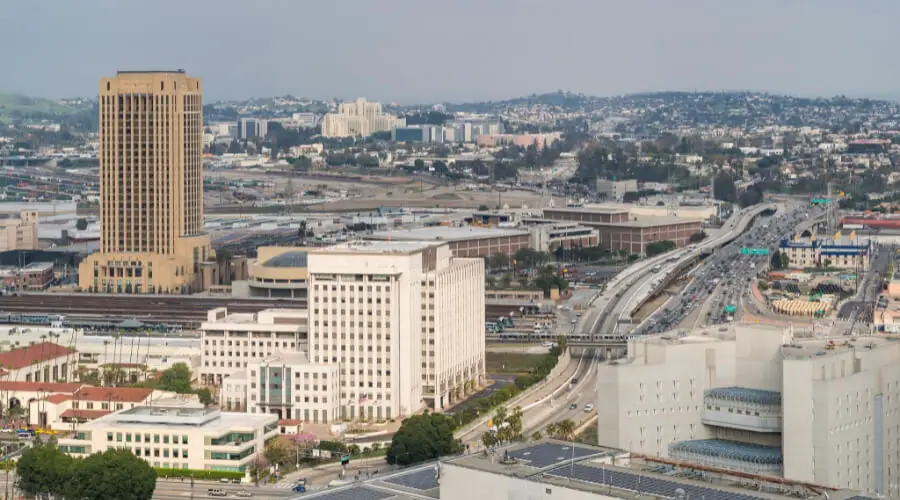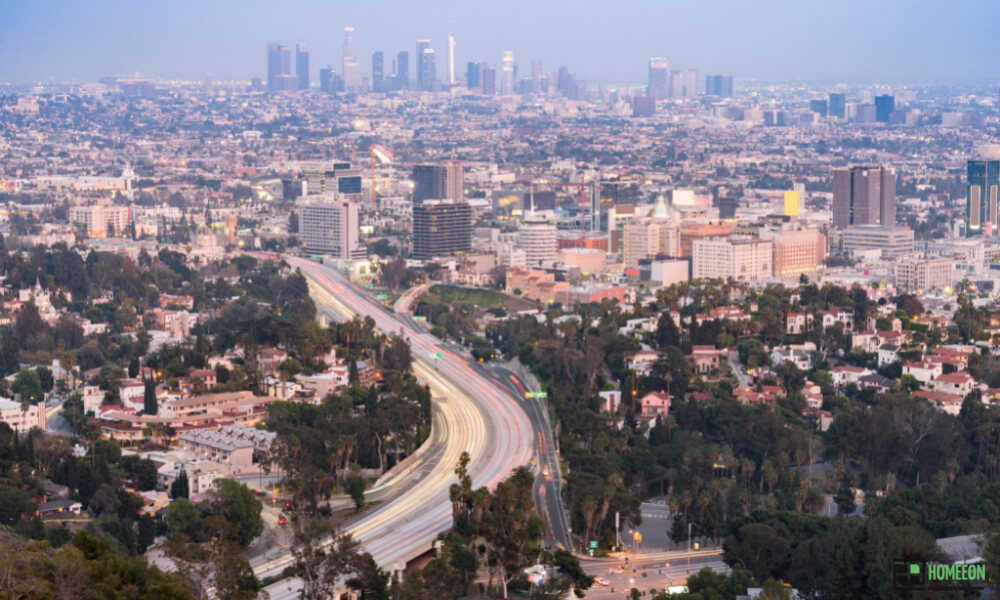Last Updated on July 30, 2023 By Emma W. Thomas
Los Angeles may appear dirty due to its large population, high traffic congestion, and urban sprawl. These factors contribute to increased litter and pollution, which can give the impression of a less clean environment in certain areas.
Jump To A Section
What Makes Los Angeles Dirty?

The dirt problem in LA is an issue that calls for mass action. One or two individuals cannot solve the pollution issues of a whole city. For this reason, all citizens should be involved in protecting the city from suffering the terrible blow of pollution. This problem must be tackled from the roots to prevent further losses of lives and property. Doing this would require everyone to understand the root cause of dirt and litter. The following are the factors that make the city dirty;
Excessive Usage Of Plastic Water Bottles, Straws, Beverage Cups, And Coffee Lids
Research studies show that plastic and trash associated with drinks account for 36 percent. In Los Angeles, you find such trash around the beach. Plastic is non-degradable, and to dispose of it is almost impossible. Burning them contributes to smoke levels in the atmosphere. Burying causes soil pollution affecting plant growth.
Overreliance On Motor Transport
The largest population in Los Angeles drives on their way to work. Motor vehicles produce diesel and other emissions. Some of them make their way to the atmosphere and contribute to greenhouse gases and their effects. Another percentage comes in the form of dust and particles like lead. When such particles land on plants, it isn’t easy to clean them. In this way, you find people feeding on vegetables with lead which can be cancerous.
Excess Stagnant Dirty Water
Instead of using available carwashes, people in Los Angeles prefer washing their cars. Using an ordinary horse pipe uses more water than in the carwash. Additionally, people in the cleaning business tend to recycle water. Cleaning the vehicles yourself results in dirty and stagnant water, making the city dirty and smelly. The reason is that there are poor drainage systems. Water from household cleaning ends up in the streets of the city.
There Is An Overreliance On Inefficient Machine Models.
Most people in LA rely on electric-run machines like refrigerators, dishwashers, toilets, and washing machines. There are better options instead of using such. For instance, you can prefer to use the sun for drying your clothes instead of going to the dry cleaners. In place of these machines, it is advisable to go for eco-friendly models that help conserve water, money, and energy. Using them could help you save money too.
Left Out Animal Dung
Pet owners in LA rarely clean up after their animals. You are likely to find heaps of dog and cat poop in public places. The problem comes in when it rains. Rains may be rare, but it is a raging storm when they come. These storms carry the waste around the city by dropping them wherever. Eventually, the place ends up with litter all over, even in previously cleaned-up places.
What Causes Air Pollution In Los Angeles?

Los Angeles, known for its iconic sunsets and sprawling cityscape, unfortunately also holds the title for having one of the highest levels of air pollution in the United States. While factors like weather conditions and topography contribute to the city’s air quality, several man-made sources significantly contribute to the problem. In this article, we explore the primary causes of air pollution in Los Angeles, shedding light on the culprits behind the haze.
- Vehicle Emissions:
Los Angeles is notorious for heavy traffic and a car-centric culture, making vehicle emissions the leading contributor to air pollution. With an abundance of cars, trucks, and motorcycles, exhaust fumes from fossil fuel combustion release pollutants such as nitrogen oxides (NOx) and particulate matter (PM). The city’s constant traffic congestion amplifies the impact of vehicle emissions on air quality. - Industrial Activities:
As a hub for various industries, Los Angeles boasts a multitude of manufacturing plants, refineries, and power generation facilities. These industrial activities produce a significant amount of pollutants, including sulfur dioxide, volatile organic compounds (VOCs), and fine particles. The combustion of fossil fuels, chemical production, and manufacturing processes are key drivers of air pollution in the city. - Wildfires:
The surrounding regions of Los Angeles are prone to wildfires, especially during dry and hot seasons. These natural disasters release vast amounts of smoke and particulate matter into the atmosphere, significantly impacting the air quality in the city. The combination of pollutants from wildfires and other sources worsens the overall air pollution levels. - Residential and Commercial Heating and Cooking:
Inefficient and outdated heating systems, particularly in older residential buildings, release pollutants when burning wood, coal, or oil. Additionally, commercial cooking processes generate fumes and particulate matter. Collectively, these activities contribute to the overall air pollution in Los Angeles. - Airborne Dust and Construction:
Construction projects and land disturbances generate significant amounts of dust in the city. The dry climate, along with strong winds, disperses this dust, carrying fine particles that contribute to air pollution. Construction sites that do not adopt proper dust control measures are major contributors to the problem. - Port and Shipping Activities:
Los Angeles is a major port city, with shipping lanes bringing goods from around the world. Unfortunately, these activities also contribute to air pollution. Large container ships, trucks, and heavy machinery emit pollutants such as sulfur oxides, nitrogen oxides, and particulate matter, creating a significant environmental impact.
How Green Is Los Angeles?
LA may be among the dirtiest cities in the USA, but it also has the most significant natural open space. There is Griffith Park, which is 4,014 acres in size. The city has an additional open space of over 214,000 acres. On top of this, you also find the Santa Monica National Recreational Area and the Mountains Conservancy. They both cover an area of 153,000 and 55,000 acres, respectively. With this, LA translates to being a greener city than what people think. New York comes nowhere close to it when greenness is concerned.
After appearing in the top ten cities supporting public transport, the city drew a step closer to achieving the goal of becoming greener and cleaner. The following are some unknown facts about the green conditions of Los Angeles;
- The city has the largest solar-generating building in America, the Los Angeles Convention Center(LACC). This building lately received a gold-level certification. They were awarded the best Leadership in Energy and Environmental Designs for Existing Buildings, LEED-EB.
- LA boasts of having the most significant number of influential green movements in the US. The city gave birth to the most recognized green organizations, such as Heal the Bay. Others include the Tree People and the American Oceans Campaign. Most of these organizations are part Oceana Group of Advocacy.
- It is in LA where the first water wisdom toilets were used. They were unique in that they were low flow with showerheads. These toilets came with water-efficient devices. For this reason, they used less water than normal ones did.
- Another green-based fact LA boasts about is the clean airports. One of them is the Los Angeles International Airport which uses eco-friendly resources. On the other hand, Ontario Airport recycles beverage plastic bottles and paper. They also tend to use natural gas instead of fuel.
What Are The Health Effects Of Air Pollution In LA?
The Clean Air Advisory Committee assessed the possible health effects of air pollution in Los Angeles. According to their most recent review, the following were their findings;
1. Air pollution in LA can cause early deaths resulting from exposure to greenhouse gases. No matter the period you breathe the gases. Some people might be affected after a short time, depending on whether they have other conditions. People with underlying respiratory diseases are at a higher risk.
2. Los Angeles citizens are at risk of nervous system breakdown. The situation worsens when excess methane reaches the nervous system. For this reason, the government ought to do something before the air pollution condition gets worse.
3. Another health effect resulting from LA air pollution is worsening respiratory system conditions. The situation is non-conducive to lung inflammation and asthmatic people.
4. Citizens are also susceptible to reproduction problems that come with poor growth and development. There might be reports of no growth of some body parts such as fingers and toes in some cases.
Which Are The Other Dirtiest Cities In America?
Dirt and pollution are among the most significant downsides of living in the city. Other issues include pests and litter turning it into a filthy living space. Some cities can be filthier than others depending on the people’s culture and habits. The table below shows the ranking of the dirtiest cities in the US;
| City | Pollution rank | Overall rank |
| Palmdale | 6 | 55.3 |
| Los Angeles | 5 | 54.7 |
| Newark | 12 | 50.0 |
| Houston | 22 | 49.3 |
| San Antonio | 57 | 49.2 |
| New York | 127 | 48.3 |
| New Orleans | 81 | 48.0 |
Conclusion
It may sound ironic that Los Angeles is among the dirtiest cities in the USA despite the cleaning activities. This city is also home to many recognized green organizations such as Heal the Bay. The dirt in the city narrows down to individual efforts. People in Los Angeles are mostly to blame for its dirty nature since throw away plastic litter and pet droppings without consideration. Due to diverse cultures, it becomes difficult to impose cleaning habits on everyone.
References:
https://veryinformed.com/why-is-la-so-dirty/
https://www.quora.com/Despite-the-street-cleanings-why-is-Los-Angeles-so-dirty
Emma is a graduate of Domestic Science or Family and Consumer Sciences (Home Economics) from the University of Wisconsin. She has 7 years of experience Working with the strategic section of BestBuy and now writing full-time for Homeeon.
From Managing the Home, Interiors, Cleaning, and Exteriors to Gardening and everything about Making A Home Liveable – is her passion and this Homeeon is the result of this.
Emma loves decorating her home with the best stuff found online. She cares about quality over anything and writes reviews about them here in Homeeon. Get in touch with her over Pinterest.
Keep reading her blogs.
